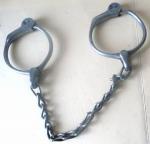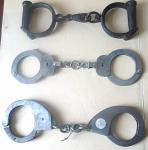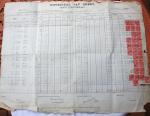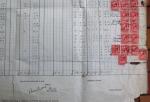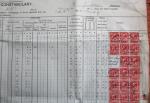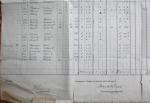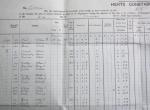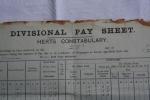-
Posts
13,225 -
Joined
-
Last visited
-
Days Won
22
Content Type
Profiles
Forums
Blogs
Gallery
Events
Store
Everything posted by Mervyn Mitton
-
Alex - another most interesting set - unfortunately it will not have the same value as the first one. The subjects are more of a personal nature and are not showing any battle or, prisoner scenes. The discolouration of the photos, is as Peter has explained. One of the reasons I said to keep your first album away from light. The portmanteaux - again as Simon has said - was carriied by officer's - or, rather their batman - for their clothing and personal effects. They would be carried either side of a mule - or, in a waggon. The termite damage is to the bottom and they would have come-up through the ground where the luggage was standing. They are quite voracious and this damage could have occured overnight. Look at Post 4 and you will see what the bag looked like - it is standing on the left inside the tent. The Cape cart was typical of the period and could carry two people + luggage. I think it was one pony, but could be drawn by two. May have been used with the Regt. to carry a paymaster or, the Dr. ? Interestingly, it looks like an issue Lee Metford leaning against the tailboard. Belfast was the site of a famous battle and a clasp for BELFAST was issued for the QSA. Both Belfast and Dulstroom are still active towns. I think Belfast is connected with mining - but, I'm sure Brett can put me right on that. 'Commandeered' means that British troops had taken it from a Boer Farm. Because this was a battle area and the Commandos would have been returning to the farms at night, this became an area where the women and children were sent to 'concentration camps' and the farms burned. This was Kitchener's policy and it was a terrible act, which 'blackened' the British name. I shall look forward to seeing more of these albums - I do hope you do have more ?
-
Some early examples. On left - about 1850's pattern without chain. Centre: Very rare - these were the style carried by the first Metropolitan Police in 1829. They went into a pocket in the back of the frock coat. Right : Heavy prison cuffs with a double lock - these were invented to hold Boer War prisoners.
-
Simon - don't be 'cheeky' - I saw them first and anyway, these should all be in one of our S.A. museums !! Graham - I hadn't realised that it was with the MI that the title of Co.Sgt.Maj. was created. Thanks for that 'tidbit'. Going back to the photos - the two of the remount section at work are particularly interesting. The one with the horses is self explanatory, but these animals ran freely so, they had to put up wire to be able to capture them. The saga of the horses and mules in the Boer War is a very sad one - their life expectancy was short - the food was hard to find and the distances vast. They have recently erected a memorial to the great numbers that died, at the Veterinarian School in Natal - perhaps someone (Brett ?) could give us more info. on the numbers ? They ended up being brought from all over the Empire to provide sufficient numbers. Also, because of the losses, the remount section was a large one.
-
George - welcome to to GMIC - I wish I had a question to ask you, but, Nova Scotia must be a fairly limited collecting field outside of Canada ? Would be interesting to know how many of our Members collect from this era ? Perhaps you could write something about the Campaigns they took part -in ? I see that you live in the US - does this mean you are in the US Army - or, perhaps live away from Canada ? Best wishes - I am sure your expert knowledge will have everyone keeping you busy. Mervyn
-
Alex - the Boer War was really the first major conflict that photographs were freely taken - Kodak having invented that small camera that could close-up. This means that war scenes are not that rare from the period - never-the-less, I would value these , in an album of the period, at about £300 -£400.($450 - $525). They mostly seem to show areas from the old Northern Province (now Limpopo Province) which was heavily fought over in the last part of the War. What is interesting is the mixture of general type pictures and the scenes of prisoners and of damage to property. The photo of Viljoen - just after capture is probably a valuable one in it's own right. They seem to have survived well - however, don't expose them to light - rather have them copied to show people. The block houses were built across the Country to stop the Boer Commando's getting to their farms for supplies. There are now - I think - only three original ones left. The ant heap - is of course, a termite mound. Field guns on the march - three outriders controlling six horses. They used to sit on the right horses, but some years earlier they were changed to the left - allowed the rider to control the other horse easier with his right hand. The Field Hospital is very interesting - I will post a model of a waggon to show the detail. Imagine being operated on in the middle of 'nowhere'. 'M.I.' ponies - this stood for Mounted Infantry. A new technique had to be invented for local infantry to keep up with the quick moving Boers. Many local regiments were converted into Mounted Infantry - they used the horses to move quickly, but dismounted to fight as infantry - with horeseholders looking after the horses. A 'drift' is a local word for a crossing point in a river - a Ford.
-

South Africa ribbon bars
Mervyn Mitton replied to Noor's topic in Great Britain: Orders, Gallantry, Campaign Medals
With the name he would be a South African of Indian origin. Why do these small 'junk' stalls split up what is obviously a pair - you were lucky Noor to be able to put them together. -
Bob, I sid you would get a lot of response to your Iraqi patches. Now - you've got to keep finding them....
-
Norman - that's good to know - I hope when you are next in Durban, you will call round for a cup of coffee. I would like to purchase - say five copies - of the book. Who can supply them ? Mervyn
-

South Africa ribbon bars
Mervyn Mitton replied to Noor's topic in Great Britain: Orders, Gallantry, Campaign Medals
I never understand how these pieces move around the World - they seem to have a life of their own ! Well done Noor - as you say goes well with the ribbon bar. -

2 Australian medal groups
Mervyn Mitton replied to Bob Lyons's topic in Great Britain: Orders, Gallantry, Campaign Medals
Two superb groups, Bob - and a pleasure to see them. We don't have nearly enough material from Australia and N.Z.. -

ANOTHER BRIT. OFFICER'S SWORD
Mervyn Mitton replied to Mervyn Mitton's topic in Swords & Edged Weapons
Jonathan - thankyou for that info. - I had gone off on the wrong track, thinking it was a German manufacturer. I had not thought of it being a South African retailer - didn't think we were so sophisticated in those days... I will try to look up some trade directories to see who they were - I wonder who the actual makers were ? -

British helmets collection
Mervyn Mitton replied to pjac's topic in Great Britain: Militaria: Badges, Uniforms & Equipment
I think my favourite would be the Fife example - obviously rare. Will be interesting to see some further details of the unit - numbers etc.. Within GMIC we seem to be building up a full set of Dragoons - Stuart has some lovely ones and I have the 1st and 7th. Who else has Dragoons?




